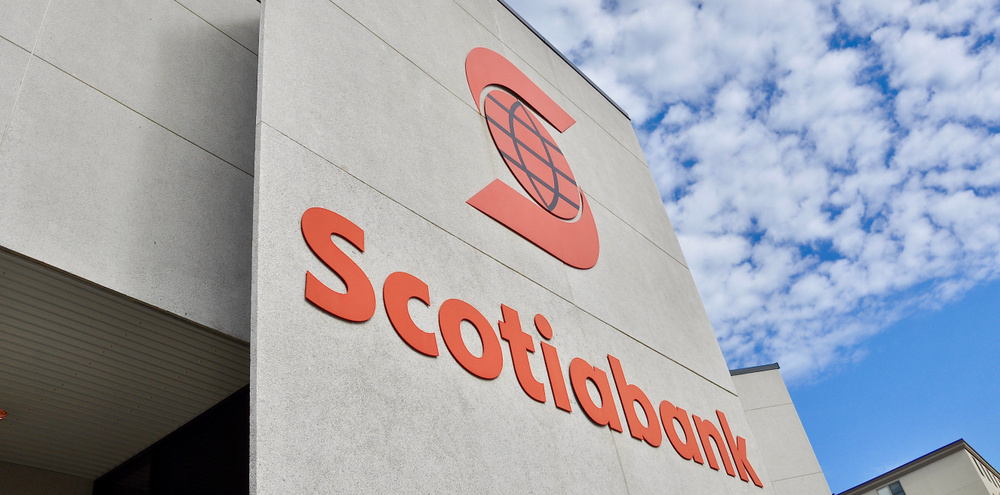Quebec, British Columbia & Alberta headline Scotiabank’s Q4 Provincial Economic Outlook

Editorial credit: Lester Balajadia / Shutterstock.com
By subscribing, you agree to receive communications from Auto Remarketing and our partners in accordance with our Privacy Policy. We may share your information with select partners and sponsors who may contact you about their products and services. You may unsubscribe at any time.
TORONTO –
After wrapping up the Thanksgiving holiday, Scotiabank Economics released its Q4 Provincial Economic Outlook this week.
Along with sharing four overall trends and a deeper look at each of the 10 provinces, analysts arrived at the conclusion that Quebec will lead the provinces in economic growth this year, with British Columbia and Alberta claiming the top spots in 2020 and 2021, respectively.
“Lifted by firm job creation and an upswing in machinery and equipment investment, Quebec will lead the provinces in economic growth in 2019,” Scotiabank provincial economist Marc Desormeaux said in a news release.
“Work related to the LNG Canada venture in Kitimat should propel BC to the top of the table in 2020, with an uptick in investment activity expected to drive Alberta’s growth in 2021.”
Those four major highlights of Scotiabank’s Provincial Outlook included:
— Population growth: This year’s population upsurge has persisted — and accelerated in some regions — which limits downside across a number of provinces.
Subscribe to Auto Remarketing to stay informed and stay ahead.
By subscribing, you agree to receive communications from Auto Remarketing and our partners in accordance with our Privacy Policy. We may share your information with select partners and sponsors who may contact you about their products and services. You may unsubscribe at any time.
— Job creation: Above-trend employment growth remains key to the forecast expansion in many jurisdictions in 2019.
— Fiscal policy: The provinces continue to take different financial and economic management approaches, but generally improving balances in many major economies are on a positive trend.
— International trade: Risks related to Sino-U.S. trade tensions, the Sino-Canadian diplomatic skirmish and the possibility of an uncertainty-led global economic slowdown remain in place.
And here is a sampling of what analysts shared about each of the provinces in the report that can be downloaded here:
Newfoundland and Labrador
Scotiabank acknowledged its forecast for Newfoundland and Labrador is largely unchanged.
“Peak major project activity continues to dominate the near-term outlook, with ventures such as the West White Rose Extension and the Muskrat Falls dam, as well as work on multiple mines expected to contribute to an upswing in private-sector capital outlays this year,” analysts said.
Prince Edward Island
Scotiabank explained that brisk population growth — the principal driver of Prince Edward Island’s robust recent expansion — has continued.
In fact, analysts discovered that at the 2019 midpoint, the island’s population has increased at least 2.1% year-over-year during the past 12 quarters. That’s a streak longer than any other province during that span, and the great amount of population growth for Prince Edward Island during the 67 years for which data is available.
“Immigration still anchors those gains, but resumption of interprovincial inflows and continued natural growth are also constructive to further growth,” analysts said.
Nova Scotia
This province continues to go through significant changes in its economy as its modifies from industries synonymous with the area. Still, people are relocating to the Nova Scotia.
“Amid headwinds for forestry and a number of traditional economic pillars like seafood and fishing via Sino-Canadian diplomatic tensions, Nova Scotia continues to witness surging population growth,” Scotiabank said.
“Full-time job creation in high-earning professional, scientific and technical, and health care services has fallen off somewhat in recent months but is expected to remain key to the province’s near-term expansion,” analysts added.
New Brunswick
Scotiabank’s forecast for this province is broken up into two distinct pieces. Analysts noted their near-term expectations are nearly unchanged.
Job creation has been generally positive, albeit weakening moderately and oriented towards part-time work. Stable, modestly above trend population growth concentrated in immigration continues to create tightness in local housing markets,” analysts said.
Taking at a longer view, Scotiabank pointed to local government officials sharing their list of six policy priorities looking ahead as far as 2024. Fostering private sector growth as well as sustainable and efficient public services were mentioned that analysts said “suggest spending control and debt reduction efforts will continue.”
Quebec
While Quebec boasts a “remarkable” streak of above-trend real GDP gains and headlined Scotiabank’s forecast, analysts acknowledged there are still some potential pitfalls the area could experience.
“The key risk to the outlook at this time continues to be presented by a weaker global environment vis-à-vis trade uncertainty,” analysts said. “A slowdown south of the border would of course weigh significantly on the Quebec economy.
“However, our base case assumes that downside will be avoided and that Quebec exports will continue to recover from a soft start to the year, supported by strong fundamentals along with a weak exchange rate and solid, albeit easing U.S. growth,” they continued.
Ontario
First the upbeat part of what Scotiabank noted about Ontario.
“The modest upward revision to our forecast of Ontario economic growth this year largely reflects a solid rebound in Q2 2019 that followed two quarters of weak expansion,” analysts said. “That mirrors a jump in automobile production that looks to have lifted exports, as well as an increase in residential investment that rallied from early-year doldrums.”
While the worker strike involving General Motors reportedly is about to end after about a month, analysts cautioned about the ramifications.
“The auto parts sector is increasingly impacted in light of highly integrated value chains and the more serious retrenchment of GM operations south of the border,” Scotiabank said. “While the impact on the provincial outlook will be modest, it could have serious consequences locally.”
Manitoba
What propelled Manitoba’s economy for a time is about to run out of fuel.
“Most of the previously detailed economic forces remain in place, and they are largely negative for growth in the Keystone Province,” analysts acknowledged.
“After significantly supporting the expansion in recent years, ventures such as the BiPole III transmission line, Keeyask generating station, and Manitoba’s portion of the Line 3 pipeline will pose a drag on provincial capital spending as they are completed this year and next,” they added.
Saskatchewan
Scotiabank reported much of the economic data and trends are stable in Saskatchewan. But there is one area where turbulence could surface.
“Saskatchewan is particularly vulnerable to protectionist Chinese policy given its trade ties to the country and agriculture-oriented external sector, though further gains in potash production are constructive to export growth,” analysts said.
Alberta
Scotiabank is trying to be cautiously optimistic about the potential for this province in the heart of the Oil Patch.
"We continue to anticipate a soft expansion in Alberta this year, with a rebound to growth of about 2.5% in the ensuing two years,” analysts said.
“Oil and gas investment remains muted amid heightened uncertainty via insufficient pipeline transportation capacity,” they continued. “That has translated into other corners of the provincial economy, reflected in employment growth well below the national average and softness to date this year across indicators such as home building, retail sales, and non-residential construction.”
British Columbia
Scotiabank sees this province leading the national in job creation. Analysts shared specific reasons why.
“The LNG Canada venture in Kitimat should boost the province’s expansion throughout the forecast horizon,” they said. “In line with project plans and industry estimates of capital expenditure profiles for ventures with comparable timelines, peak activity is expected in 2021.
“However, the most significant contribution to BC growth relative to our baseline forecast comes next year, with the largest annual jump in capital spending between 2019 and 2020,” analysts went on to say.


